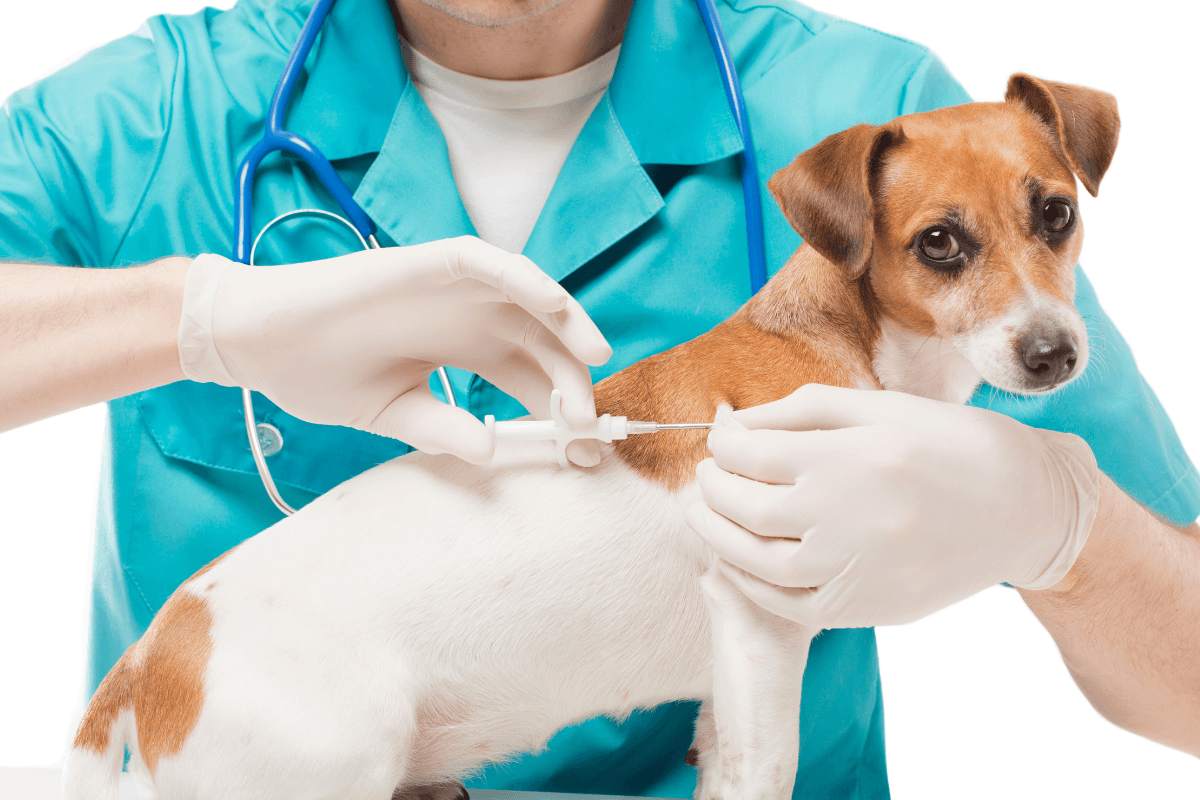Accurate dosing protects pets with diabetes from dangerous swings in blood sugar. Used correctly, pet insulin can stabilize glucose and support day-to-day comfort. This guide explains practical steps that reduce dosing errors, improve monitoring, and strengthen communication with your veterinary team.
Key Takeaways
- Confirm concentration and units before every injection to avoid mismatches.
- Match syringes to insulin type; do not convert by eye.
- Feed on schedule, monitor behavior, and log doses and readings.
- Know early signs of hypo- and hyperglycemia and act promptly.
- Store vials properly; discard if expired, contaminated, or heat-damaged.
Using Pet Insulin Safely
Safety starts with a consistent routine. Check the insulin name, concentration (U-40 or U-100), and dose every time before drawing up the injection. Read the label aloud, then match the syringe type. A simple two-person or two-step check reduces misreads and prevents avoidable problems.
Keep a written log for dose, time, food, activity, and home glucose values. Patterns emerge over weeks, not days. Share this record during rechecks so your veterinarian can interpret trends and adjust care when needed. Align refills and monitoring supplies before you run low to avoid last-minute substitutions.
Recognize Overdose and Underdose Signs
Low blood sugar (hypoglycemia) can cause wobbling, tremors, hunger, confusion, or seizures. High blood sugar (hyperglycemia) may cause thirst, frequent urination, lethargy, and weight loss. Early recognition limits complications and helps your veterinary team correct the cause.
Some reactions commonly labeled as pet insulin side effects are actually signs of glucose going too low or too high. Keep corn syrup or a similar simple sugar available for emergency use when your veterinarian has advised it. For symptom details and stepwise actions, see Insulin Overdose in Dogs for canine-specific guidance, and review Hyperglycemia in Dogs to understand high-glucose patterns.
For clinical definitions and management frameworks, the AAHA diabetes guidelines outline diagnostic criteria and monitoring options. For symptom lists across species, the Merck Veterinary Manual provides authoritative overviews.
Measure Accurately: Syringes, Pens, and Units
Insulin comes in different strengths. U-40 products require U-40 syringes, while U-100 products require U-100 syringes. Never estimate or convert by eye. A mismatch can underdose by more than half or overdose by a similar margin. Confirm the label before every draw, and store the correct syringes beside the matching vial to prevent mix-ups.
Use consistent devices to reduce variability. Many owners find that marking the plunger with a fine line at the prescribed dose prevents slips. One fresh disposable needle per injection helps accuracy and comfort. For individualized dosing discussions, your veterinarian may reference weight, curves, and concurrent diseases. For brand-specific protocols in dogs, see Humulin N Dosage for Dogs to understand typical titration approaches and cautions.
Unit Conversions and Mismatch Risks
Never convert volumes on the fly between U-40 and U-100. The scale spacing differs, so matching syringe to product is required. If you use U-40 vials, ensure the box, bottle cap, and syringe packaging visually match. Separate storage bins for each type prevent confusion. Keep one active product at a time whenever possible. Label a home dosing chart with both the insulin name and concentration to avoid wrong-bottle errors. For more background on unit standards and safe use, review the FDA’s ProZinc prescribing information, which highlights concentration and storage requirements.
For day-to-day supplies and compatible devices, the Diabetes Products section groups insulin, syringes, and accessories, which can simplify matching and restocking.
One practical reminder: pet insulin syringes are designed with species dosing in mind and may have red-colored U-40 markings. Keep them in their original box to prevent mix-ups with human U-100 syringes.
Timing, Meals, and Activity
Consistency matters for absorption and safety. Feed the same type and portion of food at the same time daily, unless your veterinarian recommends otherwise. Walks and play affect blood glucose, so plan similar activity around injections. When routines shift, monitor more closely and log changes for later review.
Technique influences absorption and confidence. Practice drawing up saline with your veterinary team before giving insulin shots. Use calm handling, tent the skin, rotate sites, and avoid fur or muscle. A short checklist posted near supplies helps maintain steady habits when multiple caregivers are involved. If you are still learning about giving insulin shots to pets, ask your clinic to demonstrate again and watch you perform a supervised dose.
Diet adjustments can stabilize curves. For species-specific feeding tips that pair well with dosing, see Diabetic Cat Food for carbohydrate targets and transitions in cats.
Storage, Handling, and Shelf Life
Temperature control maintains potency. Follow labeled ranges, avoid freezing, and keep vials away from heat or sunlight. Do not shake products that require gentle rolling. Discard vials past the in-use time listed on the label, even if some fluid remains. Visual changes like clumping, cloudiness outside the expected appearance, or particles can signal loss of integrity.
If you are uncertain how to store pet insulin during travel, use a validated cooler and a thermometer to keep within the recommended range. For labeled storage details and species indications, review the ProZinc Vial page, and consult the official ProZinc prescribing information for temperature limits and handling notes. Replace damaged vials promptly; potency drift can mimic underdosing.
Tip: Keep a small emergency kit with a meter, test strips, lancets, and Dextrose for rapid sugar support when your veterinarian has advised its use.
Dose Logs, Glucose Curves, and Adjustment Workflows
Home logs and periodic curves help your veterinary team interpret trends and reduce guesswork. Record dose, timing, food, energy level, water intake, and any readings. Share copies during rechecks. Avoid changing doses without direction; instead, flag patterns like repeated low readings at specific times or continued high values despite adherence.
A simple pet insulin dosage chart can organize targets, meter ranges, and action steps for common scenarios your veterinarian has already approved. Note when a reading triggers a call to the clinic versus home measures like feeding and rechecking. Consistent documentation supports safer adjustments and reduces surprises during illness or schedule changes.
When to Run a Curve at Home
Curves are most informative after you hold a dose steady and maintain consistent feeding. Choose a quiet day, test at baseline, then every 2 hours until the next dose. Log food portions, treats, and activity. Share results with your veterinarian for interpretation within the clinical context. Curves can reveal nadir timing, duration, and rebound effects. Do not chase single readings; watch trends across days. If results conflict with clinical signs, your veterinarian may recommend confirming with fructosamine or in-clinic monitoring.
For broader educational context and ongoing learning, explore our Diabetes Articles, which group related monitoring and safety topics.
Species and Product Differences
Dogs and cats metabolize insulin differently. Onset, peak, and duration vary across products. Work with your veterinarian to choose a formulation that fits your pet’s eating patterns and daily schedule. Transition plans should be deliberate and documented to avoid overlapping actions or gaps in coverage. Monitor more closely during any change.
Choose formulations with consistent supply and training support. For canines, common options include NPH, lente, and protamine zinc; for felines, protamine zinc and long-acting analogs are frequent. Discussions about types of insulin for dogs should cover onset, nadir timing, and dose consistency. For brand-specific canine information, see Lantus for Dogs to understand duration and handling differences. For feline safety and rebound risks, review Hypoglycemia in Cats and Hyperglycemia in Cats for signs to watch during adjustments.
Transitions and Error Recovery
Mistakes can happen. If you suspect a wrong dose, monitor calmly and follow the action plan you built with your veterinary team. For potential overdoses, check glucose if trained, watch for neurologic changes, and be ready to give a fast sugar source as directed. For persistent high readings, confirm your product, syringes, and technique before assuming resistance.
Illness, appetite changes, and new medications can alter glucose responses. Contact your clinic when signs and readings do not align, or when you see repeated lows or highs. For broader context on severe events, review Insulin Overdose to understand risks and prevention steps. For owners using Humulin-based protocols, the article Humulin N Guide for Dogs outlines practical timing and monitoring concepts used in practice.
Recap
Safe insulin use relies on matching syringes to concentration, consistent routines, and vigilant monitoring. Simple safeguards—label checks, written logs, and clear action plans—prevent most errors. Partner closely with your veterinary team, especially during changes in product, dose, diet, or health status.
Note: Keep this guide with your supplies and update your dosing chart after each veterinary recheck.
This content is for informational purposes only and is not a substitute for professional medical advice.


